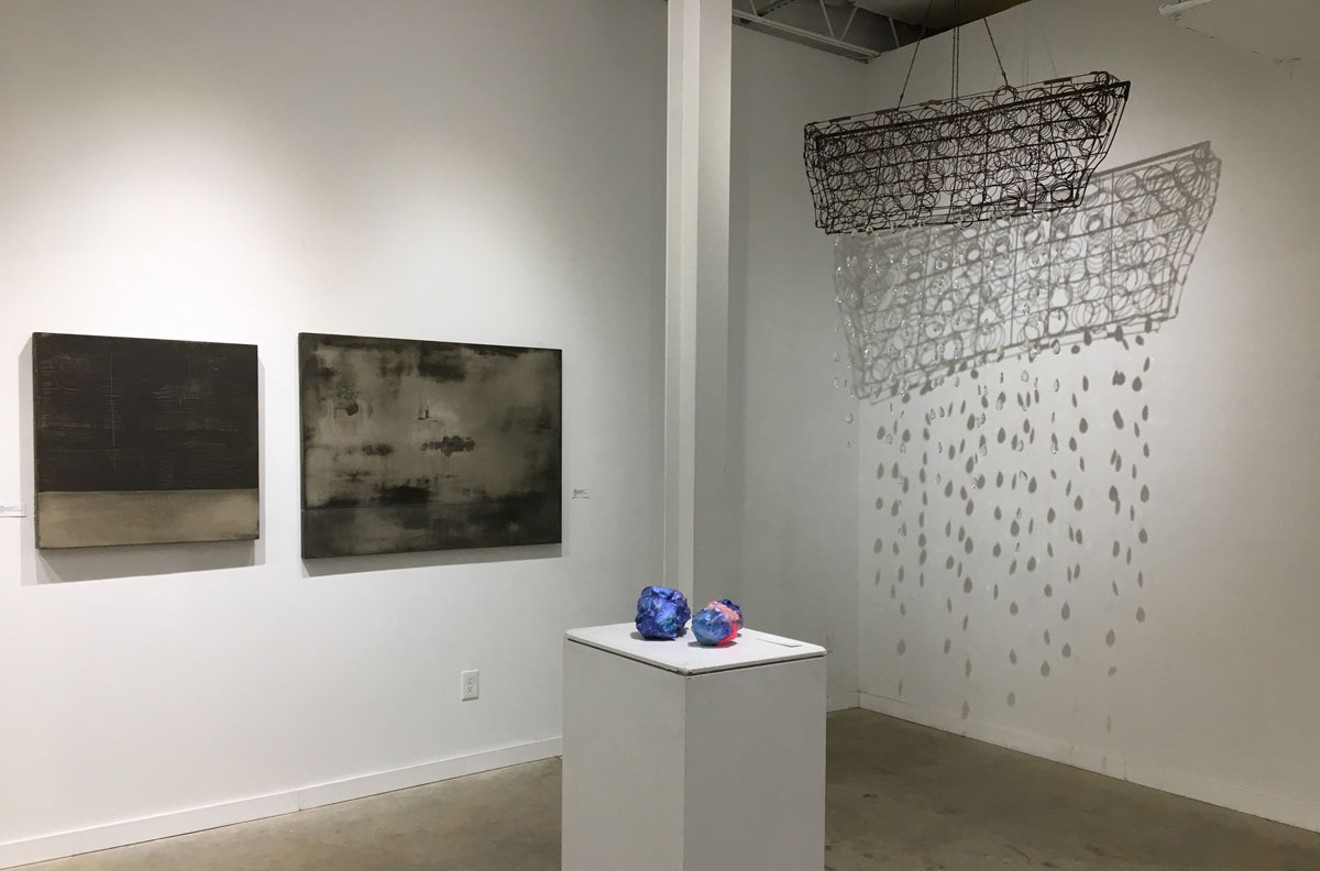The new location has some upsides, among them a building in much better shape. The members outfitted the raw space with pristine new walls and effective lighting, creating two sensational exhibition areas: one in front for associate members, and a larger one in back for full members. But there are downsides, too, primarily the distance from central Denver. It’s been hard to get people to come to the gallery aside from opening-night receptions and First Fridays, and even then the crowds are thinner. And that’s too bad, because there have been a lot of worthwhile exhibits since last summer’s move that too few people saw.
The Associates Space is currently occupied by Scottie Burgess: Boundary Lines, a solo with only a handful of pieces, though two of them are monumental in size. Just one of them could have carried the show all by itself: the absolutely fabulous “A Path to Here.” The enormous installation is made out of scores of short wooden boards stacked on top of each other to create a candy cane-like form that arcs above viewers’ heads. At the bottom the boards have been blackened, while at the top they have been left raw. Running parallel to this form is a shorter arc that supports the larger one, but it’s been wrapped in multi-colored twine. With this Burgess show, Pirate continues to demonstrate its longtime strength at showcasing young, emerging artists.
As good as Boundary Lines is, though, The Pirate Alumni Show in the Members Space is clearly the main attraction. It was organized by Pirate member Charles Livingston, who came up with a list of people who had once been Pirates (inadvertently leaving some out), asked them to submit works and then selected the pieces he wanted to display. But even though he chose what to include, it’s difficult to design an exhibit for work by nearly twenty artists. Rather than put similar things together to create themes or put them together by era (the years a member was active are indicated in copy posted on the wall next to each piece), Livingston distributed them almost randomly, a free-associational approach to laying out group shows that’s been something of a fad recently but here results in some cluttered places. While a few of the works were previously exhibited at Pirate, most of the pieces are newer, with some created earlier this year.

Margaret Neumann painting (from left), Claudia Roulier assemblage, Dale Chisman print and Monique Crine paintings.
Robert Delaney

Collin Parson, wall tondo and sculpture (from left), painted skateboard bed by Matthew Doubek, and William Stockman painting.
Robert Delaney

Terry Campbell painting (from left), Martha Daniels ceramics, painting by Peter Illig, and painting by Wes Magyar.
Robert Delaney
Not only is The Pirate Alumni Show worth seeing just for the art exhibited, but it could serve as a preliminary study for a properly done retrospective — not just of Pirate, but of the entire alternative scene since the 1980s.
From here, oral interviews with former members could be used to establish a formal history; with that information, it would be possible to mount a show that would include only pieces that had originally been exhibited at the co-ops, and from a more comprehensive roster of members. Of course, a venue like Pirate is too small to pull off such an effort, but History Colorado could take it on: It has the infrastructure to organize the interviews and is apparently desperate for exhibition ideas. Other possibilities might be MCA Denver, the Center for Visual Art, the Arvada Center or RedLine. No matter who takes on the challenge, though, it’s important to document the development and impact of the artist cooperatives of Denver before that history is lost forever.
Scottie Burgess: Boundary Lines and The Pirate Alumni Show, through July 8, Pirate Contemporary Art, 7130 16th Avenue, Lakewood, 720-601-0966, pirateartonline.org.












